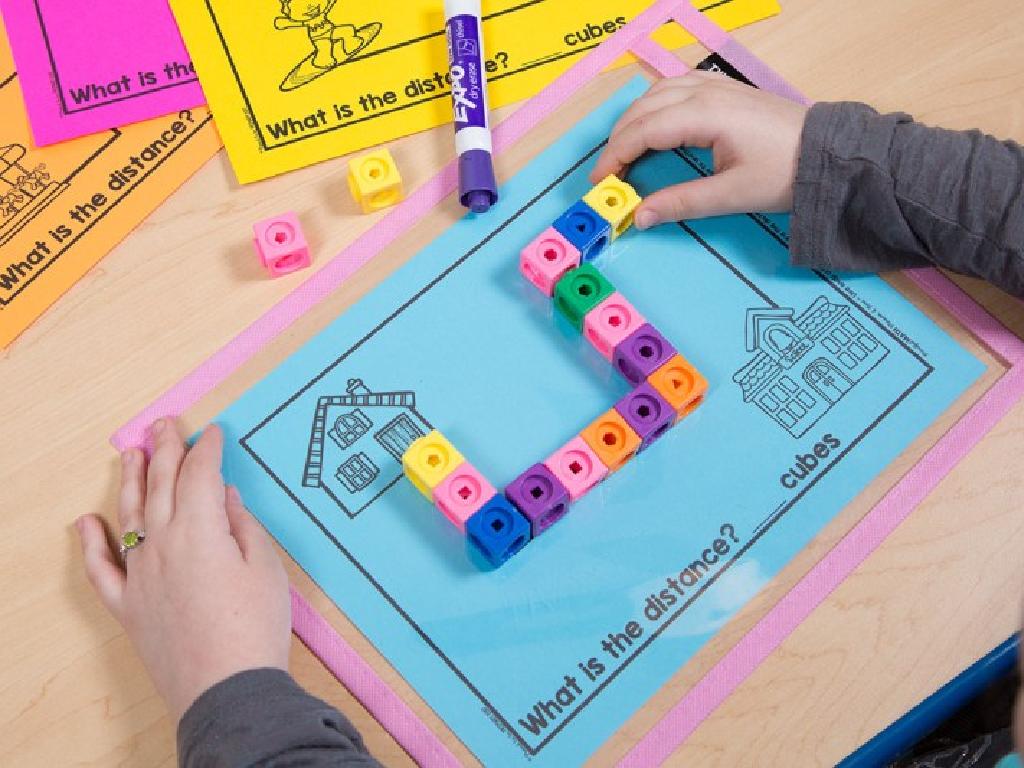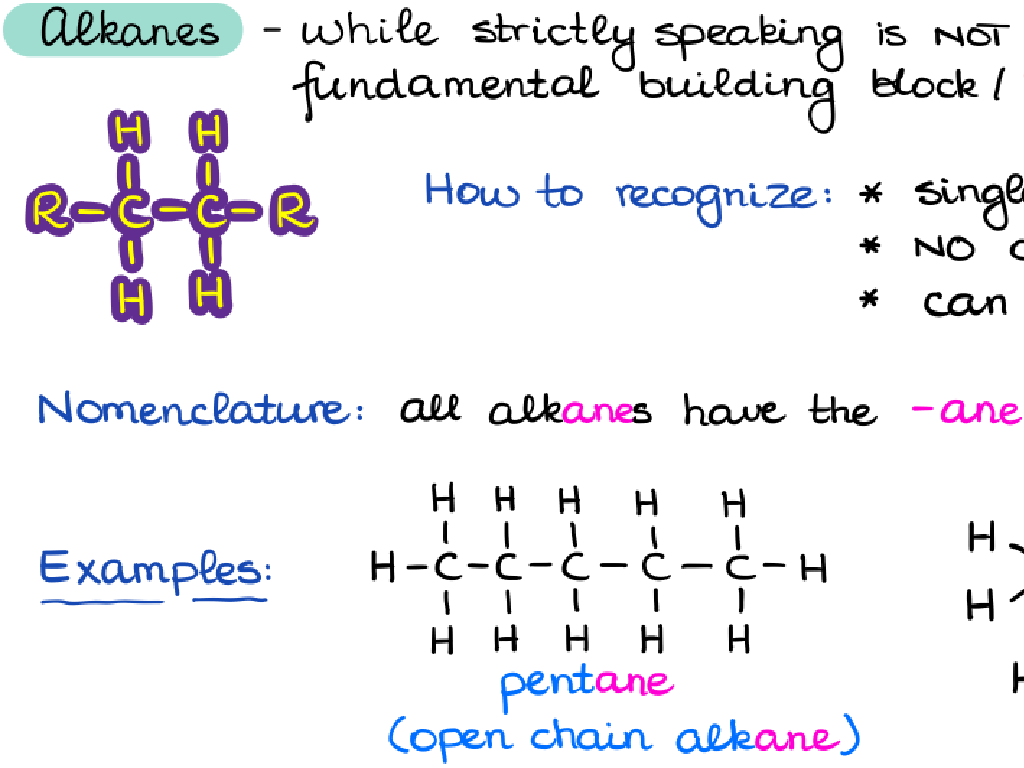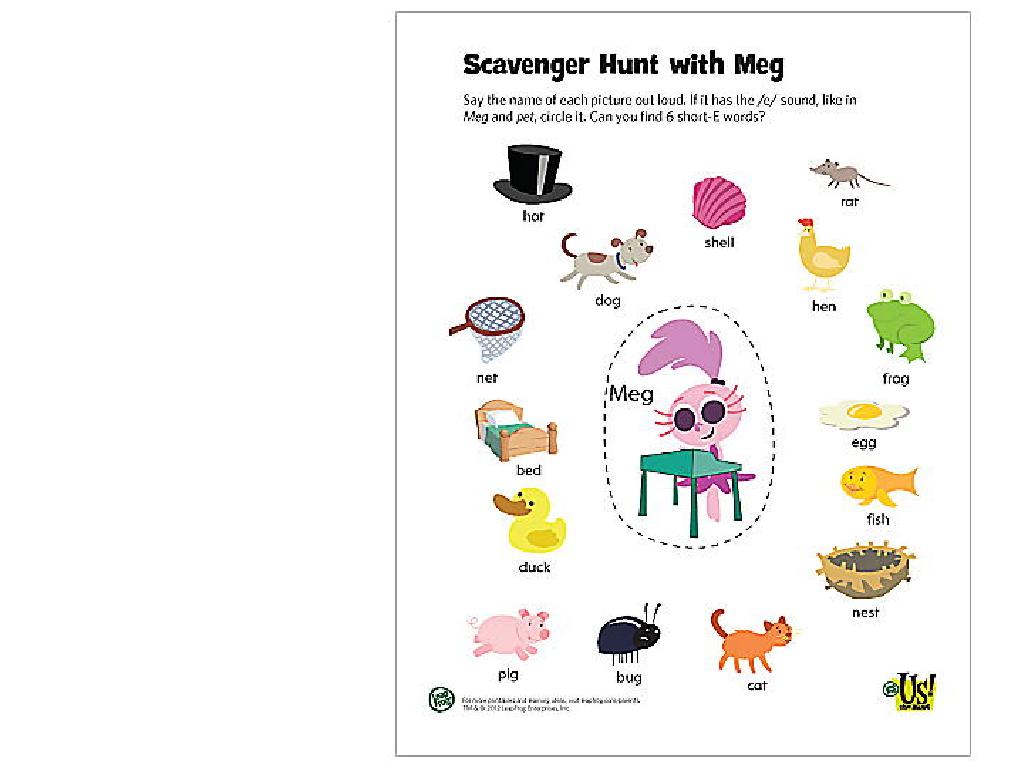Rotations: Graph The Image
Subject: Math
Grade: Eighth grade
Topic: Transformations And Congruence
Please LOG IN to download the presentation. Access is available to registered users only.
View More Content
Rotations: Spinning Around a Point
– Exploring transformations
– Transformations change a figure’s position or size.
– Defining congruence
– Congruence means figures are identical in shape and size.
– Understanding rotations
– A rotation turns a figure around a fixed point.
– Rotations in coordinate plane
– We’ll use (x, y) (x’, y’) to show how points move.
|
This slide introduces the concept of transformations in mathematics, focusing on rotations as a specific type of transformation. Begin by explaining that transformations can alter the position, orientation, or size of a figure. Congruence is then defined as the characteristic of figures that are exactly the same in shape and size, which remains true even after a transformation like rotation. Emphasize that during a rotation, every point of the figure moves in a circular path around a fixed point, known as the center of rotation. Use the coordinate plane to illustrate how points are mapped from their original position to their new position after a rotation, reinforcing the concept with examples. Encourage students to visualize rotations by considering real-life objects like a spinning top or a rotating wheel.
Understanding Rotations in Geometry
– Define geometric rotation
– A rotation turns a figure around a fixed point
– Rotations: clockwise & counterclockwise
– Direction of turn is important: right (clockwise) or left (counterclockwise)
– Key elements of a rotation
– Every rotation has a fixed point, degree of turn, and a direction
– Rotation: center, angle, direction
|
This slide introduces the concept of rotation in geometry, which is a type of transformation where a figure is turned around a fixed point, known as the center of rotation. Students should understand that rotations can be performed in two directions: clockwise or counterclockwise. It’s crucial to identify the center, angle, and direction for describing a rotation accurately. Use examples like turning a key in a lock (clockwise) or unscrewing a bottle cap (counterclockwise) to illustrate the concept. Encourage students to visualize rotations by using tracing paper or interactive geometry software to see the effects of different rotation parameters.
Properties of Rotations
– Rotations preserve distances
– No matter how you rotate, all points stay the same distance from the center.
– Rotations keep shapes unchanged
– A figure’s size and shape remain the same after rotation.
– Understanding the ‘Rule of Rotation’
– ‘Rule of Rotation’ helps us predict the position of an image after a rotation.
– Rotations maintain angle measures
– Angles before and after rotation are equal.
|
When introducing the concept of rotations in geometry, emphasize that rotations are a type of transformation that turns a figure around a point called the center of rotation. The distance from the center to any point on the figure stays the same, which means that rotations preserve distance. It’s also crucial to note that rotations do not alter the figure’s size or shape, maintaining congruency. The ‘Rule of Rotation’ is a guideline that helps us understand how points move around the center of rotation, typically described in degrees and direction (clockwise or counterclockwise). Understanding this rule is key to predicting the outcome of a rotation. Angle measures are also preserved, meaning the angles within the figure remain the same before and after the rotation. Use examples like rotating a piece of paper or a shape on a coordinate grid to illustrate these properties.
Graphing the Image of a Rotation
– Identify rotation center
– The fixed point around which the shape rotates
– Determine rotation angle
– The degree of rotation, e.g., 90°, 180°
– Measure angle with protractor
– Use a protractor to find the precise angle
– Graph the rotated image
– Plot the new position of the shape after rotation
|
This slide is aimed at teaching students how to graph the image of a shape after a rotation. Start by identifying the center of rotation, which is the point that stays fixed while the rest of the shape moves around it. Next, determine the angle of rotation, which tells us how far the shape is to be rotated. Students should use a protractor to measure this angle accurately. Finally, they will graph the rotated image on a coordinate plane, ensuring that the distance from the center of rotation to each point on the shape remains constant. Encourage students to practice with different angles and centers of rotation to solidify their understanding.
Exploring Rotations on the Coordinate Plane
– 90-degree clockwise rotation
– A point (x, y) becomes (y, -x)
– 180-degree rotation
– A point (x, y) becomes (-x, -y)
– 270-degree counterclockwise rotation
– A point (x, y) becomes (-y, x)
– Observing image changes
– Each rotation alters the image’s position; symmetry may be observed
|
This slide aims to help students visualize and understand the effects of rotations on figures in the coordinate plane. A 90-degree clockwise rotation essentially swaps the coordinates and changes the sign of the new x-coordinate. For a 180-degree rotation, both coordinates change signs, resulting in a figure that is upside down from the original. A 270-degree counterclockwise rotation is the same as a 90-degree clockwise rotation but in the opposite direction, so the coordinates swap with the new y-coordinate changing sign. Encourage students to practice these rotations with simple shapes like triangles or squares to see how the image changes position but remains congruent to the original shape.
Rotations in the Real World
– Rotations in machinery
– Gears and engines use rotations for mechanical advantage
– Earth’s axial rotation
– Earth rotates on its axis, creating day and night
– Rotations in sports
– Athletes use rotational moves for power and precision
– Dance movements
– Dance incorporates spins and turns for artistic expression
|
This slide aims to show students how the concept of rotations they learn in math class applies to the real world. Rotations are fundamental in machinery, where gears turn to produce motion. The Earth’s rotation on its axis is a natural example, resulting in the cycle of day and night. In sports, athletes often use rotational movements to generate power, such as a basketball player spinning to shoot or a discus thrower rotating to gain momentum. Dance also uses rotations extensively, with dancers performing spins and turns to create beautiful and dynamic movements. Understanding these applications can help students see the relevance of rotations beyond the classroom and appreciate the role of mathematics in everyday life.
Let’s Practice Rotating Shapes!
– Pair up for shape rotation activity
– Rotate given shapes on graph paper
– Use protractors to measure rotation angles accurately
– Discuss the rotation process
– Reflect on how the shape’s position changes with rotation
– Share results with the class
|
This class activity is designed to provide hands-on experience with rotating shapes on a graph. Students should work in pairs to encourage collaboration. Provide each pair with graph paper, a shape to rotate, and a protractor. They should rotate the shape by a specified angle and direction. Encourage them to discuss how the shape’s position changes after rotation. After completing the activity, each pair will share their rotated shapes and describe the process to the class. This will help reinforce their understanding of rotations and how they affect the position and orientation of shapes. Possible variations of the activity could include rotating shapes by different angles, rotating about different points, or even challenging students to predict the outcome before actually rotating the shape.
Class Activity: Create Your Own Rotation
– Select a shape and rotation point
– Choose a rotation angle
– Any angle like 90°, 180°, or 270°
– Graph the shape and its rotation
– Use graph paper to accurately plot points
– Present your findings to the class
|
This activity is designed to help students understand the concept of rotation in a hands-on manner. Students will select a shape and then choose a specific point to be the center of rotation. They will then decide on an angle at which to rotate the shape, such as 90 degrees (a quarter turn), 180 degrees (a half turn), or 270 degrees (three-quarter turn). Using graph paper, students will graph the original shape and its image after rotation. This will help them visualize the transformation and its properties. Once completed, students will present their rotation to the class, explaining their choice of shape, point, and angle, and how they achieved the rotation on the graph. For the teacher: Prepare different shapes and graph paper for the students. Have a protractor ready for each group to measure angles. Consider having a gallery walk where students can view each other’s work. Possible variations of the activity could include using technology to create rotations, exploring rotations with different angles, or comparing rotations about different points.
Review and Reflection: Rotations in Geometry
– Key concepts of rotations
– A rotation turns a figure around a fixed point, called the center of rotation, through a specified angle and direction.
– Rotations and congruence
– Rotated figures are congruent to their pre-image, maintaining size and shape but changing position.
– Significance of rotations
– Understanding rotations helps in analyzing symmetrical patterns and understanding motion.
– Real-world applications
– Rotations are used in engineering, art, and technology, such as in gears and design symmetry.
|
This slide aims to encapsulate the essence of what students have learned about rotations. It should reinforce the concept that a rotation is a transformation that turns a figure around a point for a certain angle. Emphasize that despite this movement, the figures remain congruent, preserving their size and shape. Highlight the importance of rotations in understanding the properties of shapes and their symmetry, as well as their practical applications in various fields like engineering, where they are essential for designing moving parts, and in art, where they contribute to creating patterns. Encourage students to think of examples of rotations they encounter in their daily lives and discuss how this geometric concept is applied.
Homework: Mastering Rotations
– Complete rotation worksheet
– Finish the provided exercises on rotating shapes
– Practice graphing rotations
– Use graph paper to rotate figures around a point
– Review all transformation types
– Go over reflections, translations, and rotations
– Get ready for next quiz
|
This homework assignment is designed to reinforce the concept of rotations, one of the key transformation types in geometry. Students are expected to complete a worksheet that provides practice on rotating various shapes on a coordinate plane. Encourage them to use graph paper at home to visualize rotations around a point, which will help solidify their understanding. They should also review all types of transformations, including reflections and translations, to prepare for the upcoming quiz. This comprehensive review will ensure they have a strong grasp of the material. Provide tips on identifying rotation angles and centers, and remind them to check their work for accuracy.





